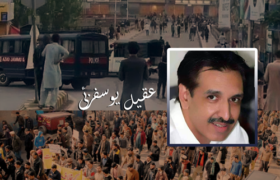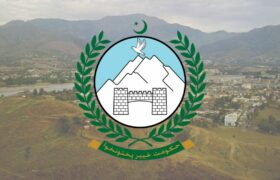Khyber Pakhtunkhwa (KP) is a cradle of ancient civilization, imbue with traditional attire, delicious cuisine and chords. Pashtun belongs to a large Eastern Iranian Ethnic group who uses Pashto as a native language and live their lives according to a code known as Pashtunwali. Pashtuns are divided into four major tribes i.e Sarbani, Bettani, Karlani and Gharghashti. They mostly reside in north and north eastern part of Pakistan.
Pashtunwali code is a collection of various principles which dictates the life of any Pashtun family. It mainly includes “Melmastia” (Hospitality), “Nanawatai” (Forgiveness or asylum), “Badal” (Revenge), “Turah” (Bravery), “Sabat” (loyalty) and “Nang” (honor). “Melmastia” is a key component of Pashtunwali which guarantees hospitality and protection to all visitors regardless of their race, religion and creed. Another principle of Pashtunwali is “Nanawatai” in which protection is offered to all those who seek or request it, irrespective of affiliation or enmity. Pashtunwali other elements such as “Turah”, “Sabat” and “Ghairat” assures loyalty to friends, family and community. Pashtunwali code relevance even in modern times is a true reflection of Pashtuns civilized nature and culture.
Pashtuns has a distinct system known as Hujra which serves as a state council for the tribe. The Hujra tradition not only ensures councils on different contentious issues but also serve as a grooming center for future generations. Hujra tradition ensures blending of youth with old generation where variety of issues including political, social and religious matters are discussed and deliberated upon. Male guests are normally entertained in Hujra thus also serving as guest house (Mehman Khana).
Pashtun traditional attire is a beautiful blend of Partoog-Korteh (Shalwar kameez), Pakul (Pashtun Hat) and long Pakhtun Frocks. Pashtun men wear Partoog-korteh with pakul on their heads and women wear long traditional embroidered frocks. Pashtun women loves to wear traditional shawls that highlights culture of different Pashtun regions.
Personification of Pashtun culture cannot be termed complete without “Pashtun music and dance”. Rubab a Pashtun musical instrument is a soul of Pashtun music and an important element of their festivals. Pashtun music mostly includes classical ghazals using Rubab, sitar, tabla and flute. Pashtun cultural dances are story tellers and are different for each tribe. Traditional dances like Attan, Khattak, Mahsud, Waziri express Pashtun cultural traditions or community history through metaphorical statements expressed in music and dance.
Food is another important part of Pashtun culture which displays the richness of its culture. Pashtun traditional food is all about relish of meat; Chapli kebab, Kabli pulao, Dumba karahi and lamb tikka are some of the famous dishes which are enjoyed not only in KP but also in other regions of Pakistan.
Despite introduction of modern laws and regulation, Pashtuns still rely on various traditional codes of conduct in their societal dealings. These codes not only dispense speedy justice but also ensures respect of various Pashtun values. However, these beautiful Pashtun traditions are losing its glare in modern generation of Pashtuns due to massive urbanization and introduction of modern education. Future Pashtun generation needs to embrace these traditions viz a viz embracing modernity in order to keep these traditions alive and stay connected to their ancestral roots.




